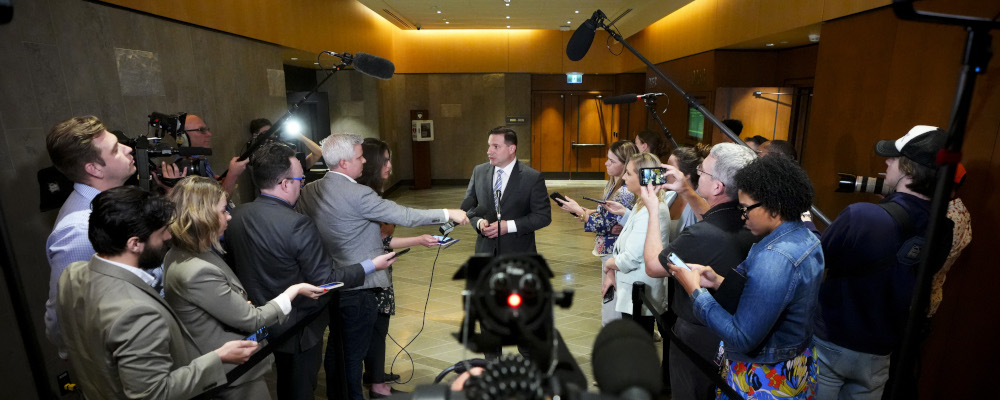Over the past two weeks significant controversy has arisen over the transfer of inmate Paul Bernardo from Millhaven maximum-security institution to a medium security facility at La Macaza, QC. The government has insisted that, due to the independence of the correctional services, there was nothing it could do to reverse the transfer.
But, as we will show, the government had options that may have kept Bernardo in a maximum security facility.
In the early 1990s, Bernardo was convicted of multiple murders and a series of rapes. He was handed a life sentence as well as a dangerous offender designation.
Section 30 of the Corrections and Conditional Release Act mandates that the Correctional Service of Canada (CSC) assign a security classification of maximum, medium, or minimum to each inmate. That assignment is determined by CSC in accordance with the factors set out in s. 17 of the CCRA Regulations. Those factors are:
(a) the seriousness of the offence committed by the inmate;
(b) any outstanding charges against the inmate;
(c) the inmate’s performance and behaviour while under sentence;
(d) the inmate’s social, criminal and, if available, young-offender history and any dangerous offender designation under the Criminal Code;
(e) any physical or mental illness or disorder suffered by the inmate;
(f) the inmate’s potential for violent behaviour; and
(g) the inmate’s continued involvement in criminal activities.
The government confirms that in March 2023, the Public Safety Minister’s Office and the Prime Minister’s Office received from CSC notice of the intended change in Bernardo’s classification. Despite having received ample notice of the transfer, neither the minister’s office nor PMO appeared to request further information regarding the basis of the change and no action was taken in respect of the proposed re-classification.
It is clear from the CCRA and related regulations that the Minister of Public Safety does not have the authority to give direction regarding the classification of individual inmates or the administration of the sentence of that inmate. However, that does not mean the minister and government had no options in this case.
The first and easiest option was for the minister to direct CSC to review the matter at that time and be prepared to provide detailed reasons regarding its assessment of Bernardo’s security classification. The minister could have determined that the public interest exception to the Privacy Act [s. 8(2)(m)] applied and directed that the review and reasons be provided to the families of Bernardo’s victims and made more generally available. This process alone would have generated a significant amount of reflection within CSC.
Further critical steps were available to the minister and government: rapidly amend the CCRA regulations to establish a rank order of the factors to be considered by CSC in assigning security classification. The government could have added two factors immediately after seriousness of the offence committed by the inmate. These would have been:
(a1) whether the inmate has been designated by the Court as a dangerous offender; and
(a2) the risk to the security and safety of the inmate, other inmates, or the institution;
Item (d) (above) would be amended so that it referred only to the “inmate’s social, criminal and, if available, young offender history.”
Amending regulations need not be a complicated exercise. Amendments to regulations are approved by the governor-in-council. This is usually done by the Treasury Board sitting as a sub-committee of cabinet. In the normal course, an amendment is submitted to Treasury Board twenty-three days prior to its consideration. However, on an urgent basis, amendments have been approved by any three cabinet ministers in a “walk-around” approach.

The PMO and minister’s office received notice of Bernardo’s proposed transfer at least two months prior to it happening. They had ample time to amend the regulations to allow CSC to assess the transfer under an enhanced set of criteria.
By requiring CSC to explicitly consider the factors in order of precedence and also consider the dangerous offender designation as the second factor, the approach outlined above would have acknowledged and respected the Court’s finding of fact that Bernardo’s personal characteristics and circumstances made him a danger to society.
Recommended for You

The Notebook by Theo Argitis: Carney’s One Big Beautiful Tax Cut, and fresh budget lessons from the U.K.

Ginny Roth: How vacant liberal nationalism left Canada worse off than George Grant even imagined

Peter Menzies: Justin Trudeau’s legislative legacy is still haunting the Liberals

‘Our role is to ask uncomfortable questions’: The Full Press on why transgender issues are the third rail of Canadian journalism



